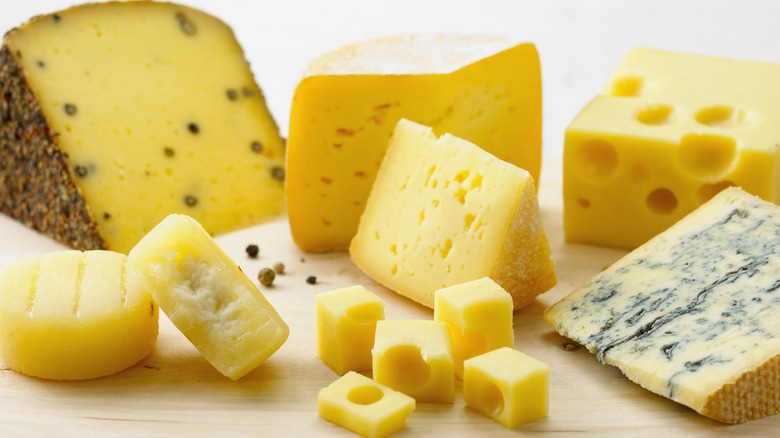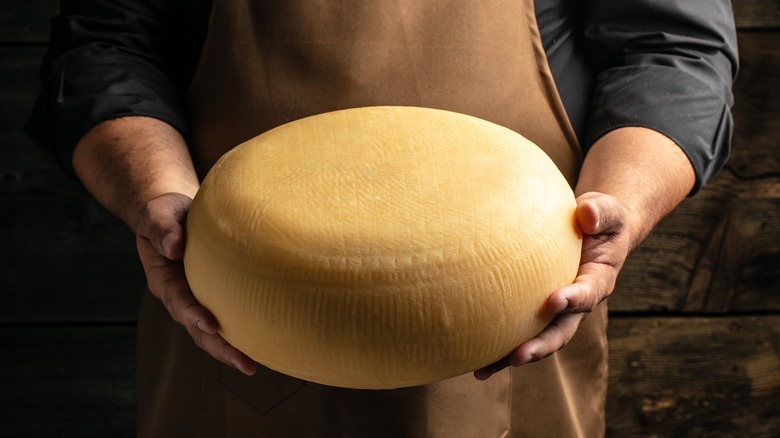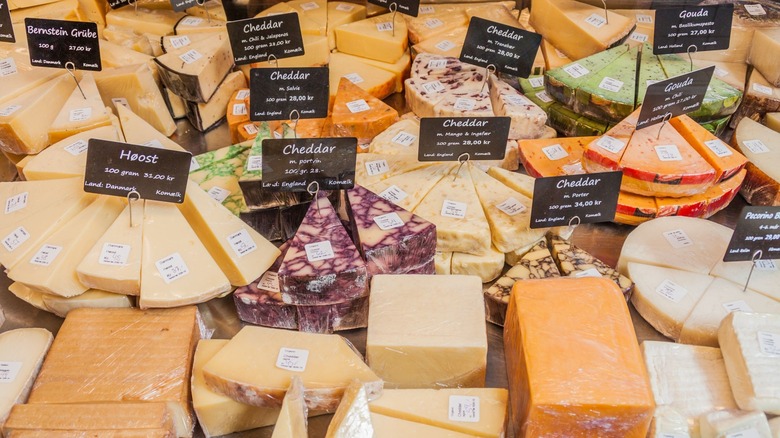The Country That Produces The Most Cheese In The World
Many countries can claim a significant place in the grand old tradition of cheese making. For instance, there's France, a nation that claims the invention of iconic cheeses including Brie, Camembert, Roquefort, and Comte. Next, one should consider the Netherlands, whose giant wheels of Edam and Gouda are iconic symbols of the country and also popular worldwide. Even the United Kingdom, the birthplace of Stilton and Cheddar, has a distinguished cheese repertoire. Yet interestingly, none of these nations produce the most cheese in the world.
The honor of the globe's top cheese producer goes to the United States, a relatively new kid on the block when it comes to cheesemaking. According to statistics gathered by Chef's Pencil, in 2021, the US produced 6,217 thousand metric tons of cheese, which is roughly three times what the second top producer, Germany, yielded in the same year. As a $40.73 billion business, the global cheese market is a particularly lucrative corner of the agricultural GDP, and is expected to grow by almost 5% every year. So how did the United States find itself on top?
The United States takes the gold
Originally, cheesemaking in America was a homey affair, with most cheese production being left to local dairy farmers. The types of cheese you could get depended on the region you lived in, with English and Irish cheese dominating in the Northeast, and Swiss and German cheeses leading in the Midwest, particularly in Wisconsin. As America entered its industrial age, its first cheese factory was built in 1851, in Oneida County in New York. Since then, the United States has been steadily using its unique advantages to take over the global cheese market.
The first advantage is the agricultural element. The United States has unprecedented access to grazing land for dairy cattle. This land and cattle advantage has also led to America producing the largest amount of cow's milk in the world on an annual basis. Because of this cheap and plentiful access to milk, U.S. cheesemakers can create affordable, large batches of cheese.
Next, there's the technology advancements that the U.S. is known for. One advancement is individually quick frozen (IQF) mozzarella. IQF mozzarella results from a process that greatly speeds up the production time of mozzarella, so it can be exported across the nation and to other countries faster. Small but mighty upgrades like this have helped America experience unprecedented growth of their cheese industry in a very short time. International sales have increased by over 846% since the early 2000s, reports the U.S. Dairy Export Council, while the overall production of cheese increased by over 1.1 million metric tons between 2010 and 2019.
Other international cheese giants
Of course, if we consider all the facts and figures available, the United States isn't the only big winner in cheese production. If we're looking at who makes the most cheese per capita, Denmark, New Zealand, and Ireland hold the top three spots respectively, as reported by Chef's Pencil. Denmark's lead is thanks to a surplus of farmland (61% of its land is devoted to agricultural production), which helps give it an edge on dairy farming.
If you rank individual states from the U.S. as countries and add them to this per-capita list, seven states land in the top 20, with Wisconsin taking the number one spot. This makes sense, as Wisconsin produces the bulk of cheese in the country, contributing 3.5 billion pounds every year.
If we lump all of the European Union countries together as one, which would include cheese giants like France, Germany, Denmark, and the Netherlands, it far eclipses the U.S. in terms of both production and consumption. However, American consumption of cheese is on the rise, and expected to increase by nearly 15% by 2025, according to a research report from the Vermont Agency of Agriculture. Only time will tell how the rankings will change in the coming years.



